Spotlight On Sol Neelman
Oct 15, 2011
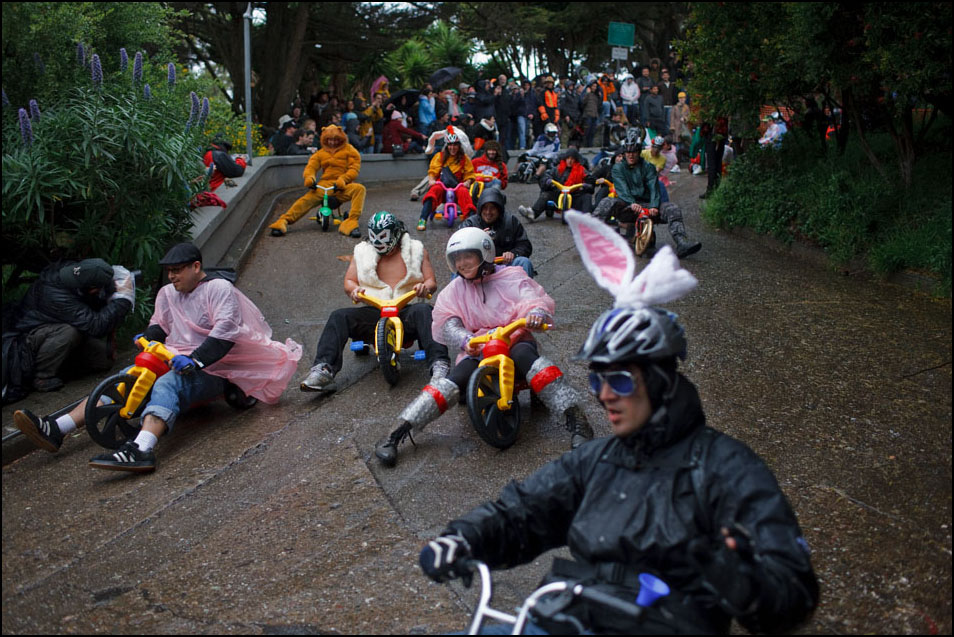
TID:
Sol, thanks very much for participating in this blog. It's great
to look into the unique world in which you work, rooted in weird
sports, and we thought this picture was a great example.
Can you set the stage for this image?
SOL:
Thanks, Ross, for asking me to participate in such a cool photo
series. It's an honor. I'm sharing with you an image from Bring
Your Own Big Wheel, a fun bike race that happens in San Francisco
every Easter. It used to take place on Lombard, but the event has grown
so big, they now host it on Vermont Street.
TID:
Before we get too much into the image, let's back up and talk
about your path in photography. You seem to have found a
niche in your work for which you are known. Can you
tell us about your path to this?
SOL:
Well, I've always loved sports. Not that I was ever any
good at them. But I grew up as an only child with a
single mom. Sports was a language I could use to
communicate with other guys, to have something in
common with them.
My family has always been travelers. I went around the
world when I was 4. So I always knew I could travel and
I love to have new experiences and meet new people.
I stumbled onto photography in junior high school. One
of my best friends was in a photography class and I
wanted to do the same. Never thought I had found a
career there, but as I got older, the only thing that
interested me professionally was photography. It allowed
me to travel and to attend sporting events. And, believe
it or not, I was also pretty shy, so photography gave me
an excuse to be outgoing.
Around 2005, a colleague in the business asked me what
I love. It was a simple question, but one I hadn't really
given much thought to. I was so focused on working at
The Oregonian, doing the daily grind of Photo-J. I had
gotten a little sidetracked over the years. I told her I loved
sports, photography, travel and weird shit. And things clicked.
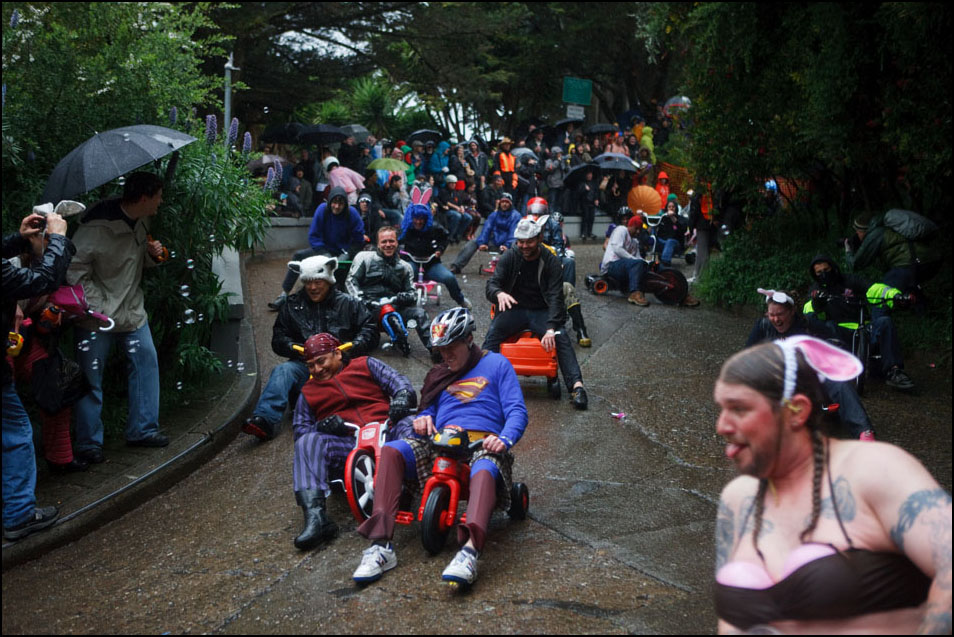
That same year, I attended Geekfest in Austin, a photo
retreat organized by aphotoaday.org founder Melissa Lyttle.
That was the first time I really shot for myself, not worrying
about what would run in print. And I had a blast. When I
returned home to Oregon, I made a point to search out fun
sporting events to photograph for myself. The first one was
roller derby, which was just starting to blow up again. From
there, I kept going.
I had also been working at the paper with Bruce Ely on his
brilliant photo column, Sidelines. We'd go to high school
events and look for photographic moments anywhere but
in the field of play. That approach to sports photography
had a profound impact on me. No longer was I trying to
make soul-less photos with long glass. I was trying to capture
honest, intimate, storytelling moments with a wide angle
lens. At one point, I told Bruce that I wanted to take Sidelines
and make it international. Along the way, it's evolved into
focusing primarily on weird and unique sporting events.
TID:
Regarding the image, how did you hear about it, and
what made you decide to cover it?
SOL:
Man, my memory is horrible. Somehow it had been on my radar
for a couple of years, most likely a tip from a friend. I had seen
some videos online, which showed its potential. I didn't realize
it'd be as great as it was.
An advantage of being freelance is I have tons of free time. So
I loaded up the car and drove down to SF.
Now I never thought I'd have a photo book published from
my weird sports, but that was definitely becoming a goal.
Ironically, this photo is on the cover of my new book, which
was just published by Kehrer Verlag in Germany.
TID:
How do you make the decision that the sport is "weird"
enough to cover? What is your criteria?
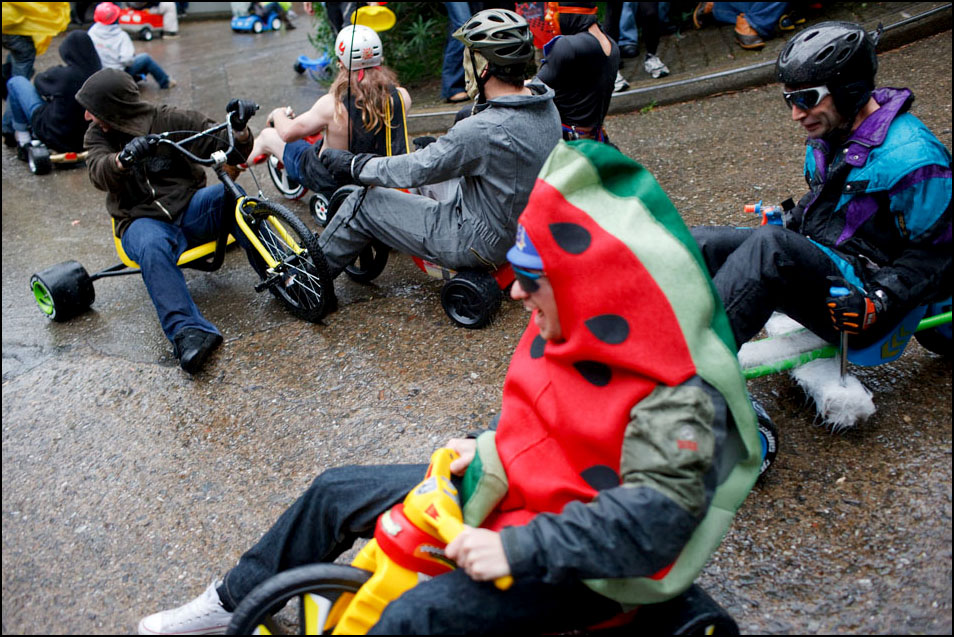
SOL:
It's got to be fun. First and foremost. And photogenic. Yeah,
fun and photogenic. And with some level of athleticism and/or
competition. If it's a spin-off of traditional sports, even better.
I know many times folks have looked at my photos and questioned
whether it's a sport or not. That's cool. But what's great about
this being my project is I get to define it and make the final call.
TID:
Lets talk about the image now. Talk about your
mental preparation for this picture.
SOL:
My mental preparation? Try not to fuck it up.
One thing I love about weird sports is that it's usually pretty
photogenic, lots of low-hanging fruit to pick. I'm sure you
could argue that the events I find are more interesting than
the images I make. My goal is to simply capture the feel and
the atmosphere. And not to fuck it up.
I'm also looking for layers, which is a reason why I prefer
using a 35mm f1.4 rather than a 400mm lens. I want more
information, not less. I want more intimacy, not less.
One thing I've learned about making photos is that oftentimes,
if you see a moment, it'll repeat itself, you just need
to watch for it and be ready. I had seen waves upon waves
of dressed-up bikers go down this hill. I chose a spot that
had nice lines and layers. At the bend, folks usually had a
HOLY SHIT!/Come to Jesus moment. It was also near enough
to the starting line that the pack was still pretty dense. I
wanted a congested image full of crazy riders having fun,
perhaps in a mild wipeout. I knew this spot had the potential.
I did move around a bit to mix things up for the 2-3 hours
of racing, but I kept coming back to this spot because I felt
it had what I was looking for.
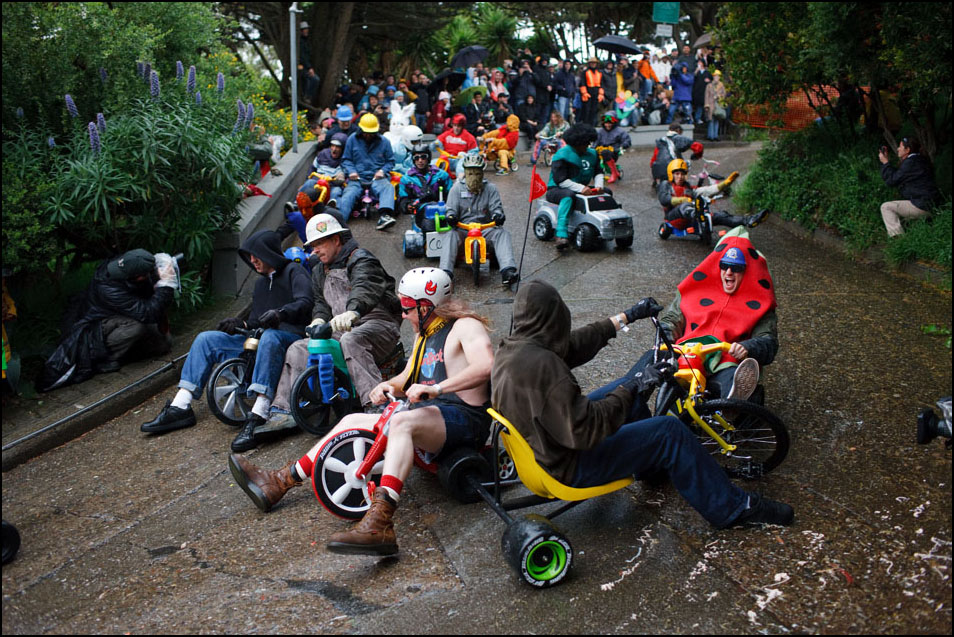
TID:
What surprised you about this experience?
SOL:
Well, at first, that anyone showed up. I arrived an hour or
two early and found rock star parking in SF, which never
happens. There was hardly anyone there. The rain was starting
to come down and I was worried that folks might not show up.
A few of the early birds there told me not to worry. And sure
enough, tons of riders dressed in costumes arrived right before
race time.
I was also a little surprised at how many fans showed up. For
an off-the-grid event like this, it had a strong turnout. I know
the organizers were complaining aloud that it was getting too
big - and mainstream. That's what usually happens with
these weird sports: they either blow up or they die on the vine
too quickly. If there's something I want to photograph that
might not last another year, I try to hit it up right away.
Slamball, I'm thinking of you.
TID:
Was there something you wish you had done
that you didn't do?
SOL:
Honestly - and hopefully without sounding arrogant - no.
I'm not saying I couldn't have made better photos. Or done
things differently, because I could have. Over the years,
I've come to peace with the way I shoot photos. I'll miss
things and others will capture better frames. But in order for
me to be the best I can, I can only be myself. That make sense?
A pet peeve of mine has always been picture editors that
say, "You should have shot it this way." or "Too bad you
didn't get this." There are really no rules in photography.
And I look at my photography as an evolution. I may want
to reshoot something because I didn't get what I wanted,
but I don't look at it ever with regret. My only regret would
be not showing up and taking photos in the first place.

TID:
What advice do you have for photographers
who try to carve out their own niche in
photography?
SOL:
There's really only one thing:
Don't take "no" for an answer.
I have 68 images in my book and only 2 were ever
published in print, despite my best efforts. Almost
all of the photos were taken on my own time and dime.
Don't think I haven't pitched being a weird sports
photographer to magazines, because I have. But I
refuse to let any lack of interest from others deter
me from what I want to do.
Back in the day, many folks like myself signed up for
newspapers with the hope of being assigned killer
stories at home and abroad. Budgets and priorities
being what they are today, that's not really feasible.
It's one of the reasons why I left the newspaper world.
I wanted more ownership of my career.
If you start taking photos of what's important to you,
that's all that really matters. Eventually, if you do it
long enough, that's how people will start to identify
you. Being my own assignment editor is pretty cool.
I always say yes to fun photo ops.
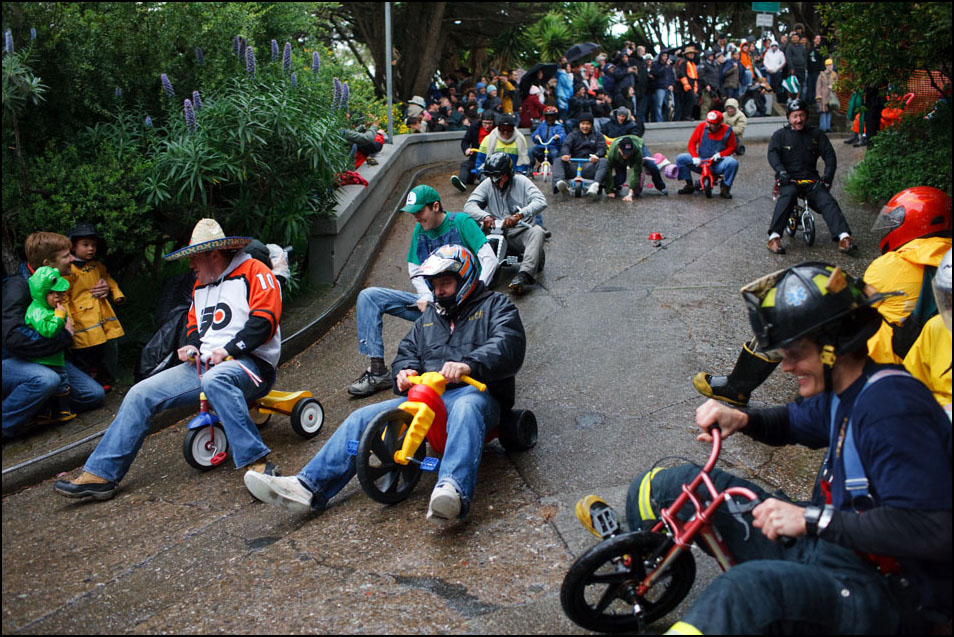
TID:
What have you learned about yourself
that you didn't know at the beginning
of your path in photography?
SOL:
It's taken a long time, but I've come to terms with my
unique, random path as a photographer. There's a
misconception that there's a single formula to success.
There's not. All the steps - and missteps - I've made
along the way helped bring me to this point. There is
more that I want from my career, but if I look at what
I have, I'm very thankful.
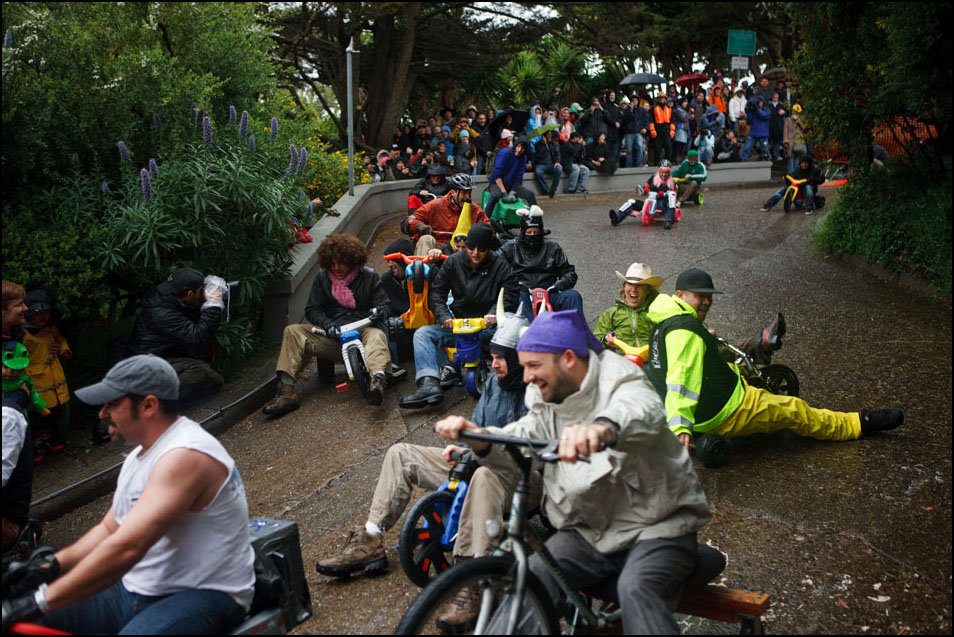
TID:
You said: "There's a misconception that there's
a single formula to success." I think that's even
more important these days for people to hear.
Can you expand on this?
SOL:
Sure. I'm going to embarrass my good friend Matt Eich,
because he's a great example of what I'm talking about.
I love Eich. I love his work. You can never say enough great
things about Eich. Never.
I think the kid just turned 25.
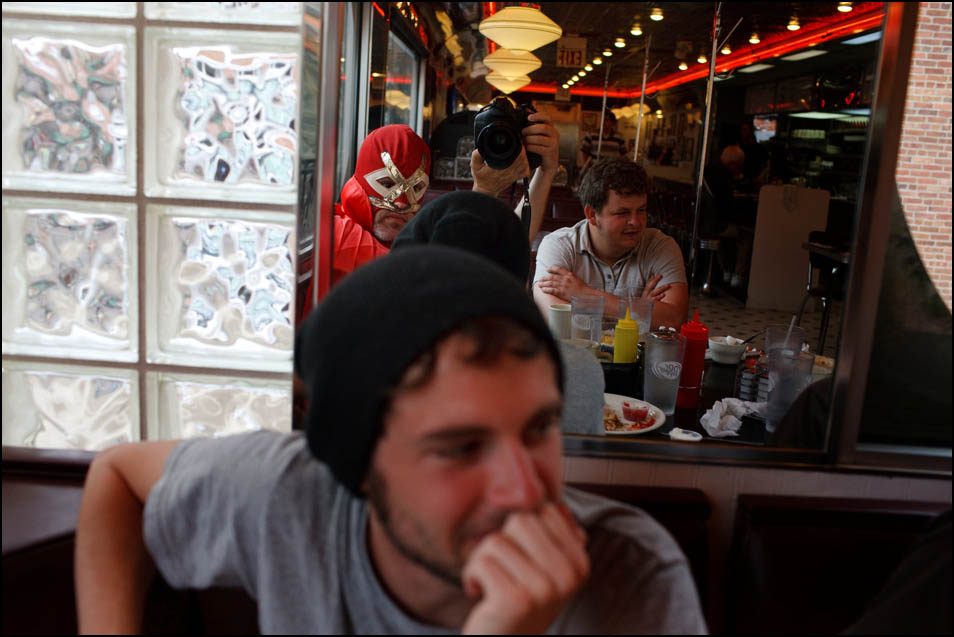
I've talked with many young photographers who tend to
compare their careers to Eich's. "If he's 25 and killing it,
why am I not taking pictures like that and I'm 30?" (Imagine
if you're 40, like me.) Comments like that are not fair to
anyone involved.
Everyone has a path, a unique path, and life experiences that
drive their passions and pursuits. Some, like Eich, figure
their shit out earlier than others. We don't expect any two
people to be identical. Why would we assume the same
about career paths?
I've met photographers who kill it now who didn't get into
it until after trying other career paths. Former law student,
ambulance driver and forest firefighter turned badass
photographer Matt Slaby is one who comes to mind.
Back in the day, a common experience for editorial
photographers starting out was to 1) go to a college for
photojournalism; 2) intern at a small paper; 3) intern at
a larger paper; 4) graduate and work for a small paper
for 1-2 years; 5) leave your small paper for a larger paper
after 3-5 years; 6) leave that large paper for your dream
newspaper job; 7) retire in your velvet coffin.
One step was supposed to lead to the next step. It didn't
always work that way then, and it's definitely less so now
since all papers are struggling. In many ways, that's exciting
because you can create your own formula to success.
TID:
What have you learned about others?
SOL:
You know, I can really identify with those who do weird
sports. There's no fame or glory in it. They do it strictly
because it's fun and allows them to be silly. That's what
I think photography has afforded me as well, the ability
to have fun and be silly.

TID:
I had a friend look over your interview, and
they asked me to include this question:
"What would be your dream weird sports
assignment, and how would you like to cover it?"
SOL:
Well, what we really need is a Weird Sports Olympics. Two
weeks of nothing but photogenic silliness and all-access
for the press photographers. We could have one for summer
sports, another for winter. Honestly, I'm surprised this hasn't
happened already.
What would really be my dream is to have a regular photo
column for a magazine (I miss others paying my expenses.)
I've already shot a lot of the more celebrated weird sports.
What I'd really like to do is go further off the grid and find
some sporting gems outside of Europe and the U.S. Do you
have any influential people who read this column?
TID:
Thanks, Sol. In conclusion, you recently published
a book of your work, how can people buy it if they're
interested?
SOL:
People interested in the book can go to:
http://www.weirdsports.de/
If folks want to see my latest adventures working on the
next volume of Weird Sports, they can check out my blog at:
http://www.solneelman.com/
++++
Sol Neelman spent from 1997-2007 as a newspaper photojournalist.
The final 7 years were spent documenting his home state as a staffer
for The (Portland) Oregonian. Yep, an Oregonian at The Oregonian. He
has placed in the Pictures of the Year International (POYi) competition
for Best Sports Portfolio and Best Action. His mom is most proud of the
2007 Pulitzer Prize for Breaking News Reporting, which he won with a
team of staffers from The Oregonian for coverage of a missing family
in southern Oregon.
His work has appeared in National Geographic, ESPN the Magazine, Sports
Illustrated, Rolling Stone, People, Newsweek, TIME and The New York Times
among others. Commercial clients include Nike, eBay and ACE Hardware (The
Helpful Place!).
++++
Next week we'll discuss this self-portrait of Ross Taylor and how you,
too, can get into monster shape by just reading The Image, Deconstructed
and eating kale.
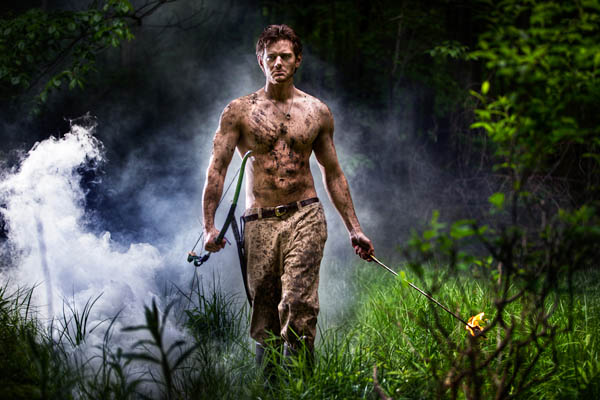
It's actually a striking image made by Daniel Kennedy. He'll discuss the
creation of the picture, and how he problem-solved to make it happen.
As always, if you have a suggestion of someone, or an image you
want to know more about, contact Ross Taylor or Logan Mock-Bunting:
[email protected]
[email protected]
For FAQ about the blog go to:
http://www.imagedeconstructed.com/